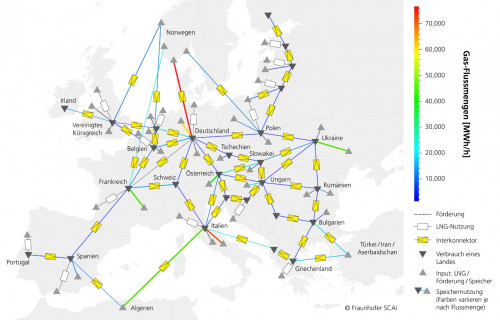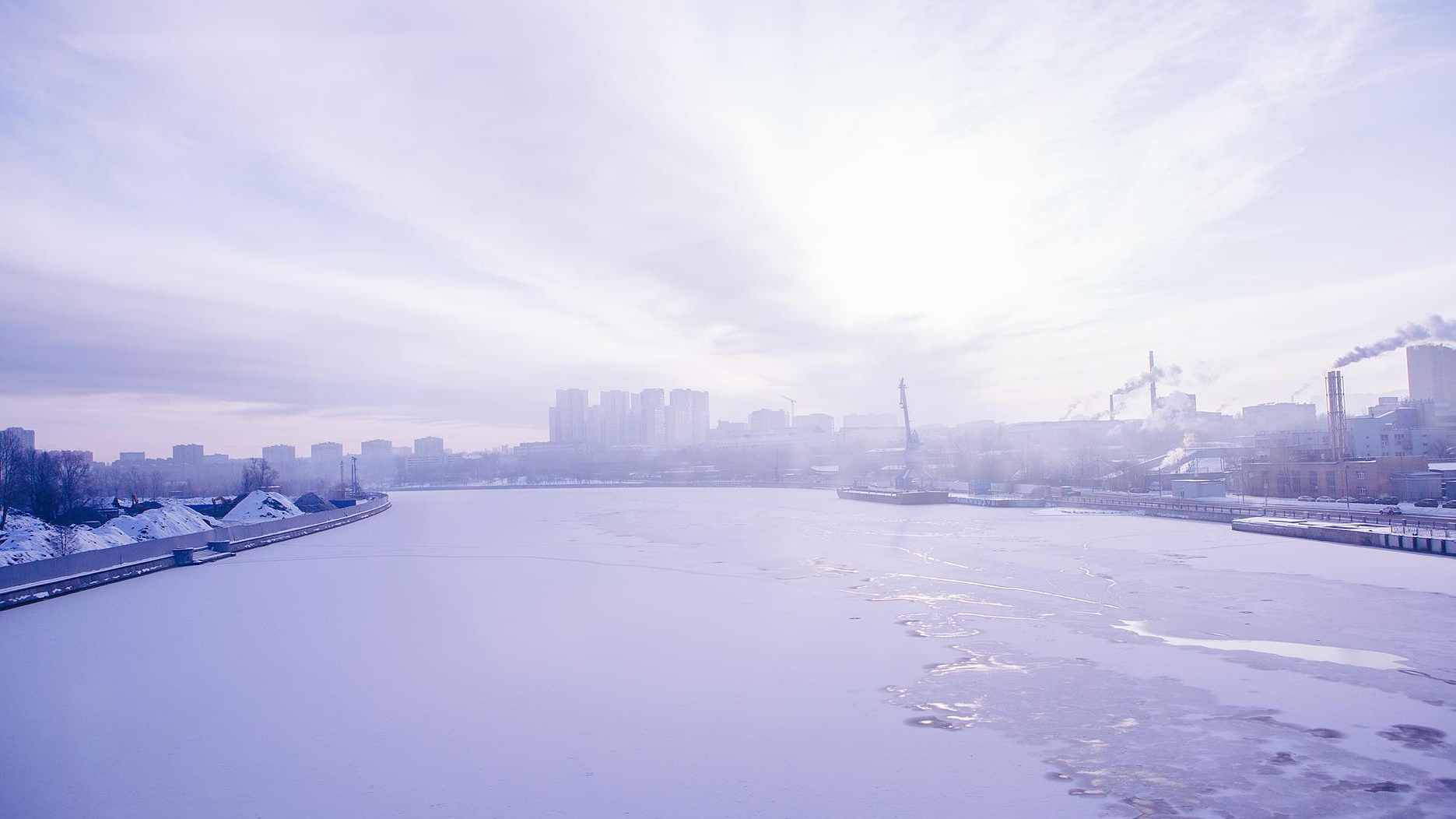What happens if Russia stops supplying gas to Europe completely? As the technical infrastructure cannot be rebuilt so quickly, there will be a shortfall of up to 30% gas in Germany next winter compared to the previous year. Targeted technical measures could reduce the deficit to 20 % if Europe acts in a coordinated manner.
 Europe in winter 2025: The simplified topology model shows the natural gas flows between regions. The image already takes into account the network infrastructure conversion measures and savings. The fluid-mechanical modeling of the gas flows was carried out using the SCAI software MYNTS. (Graphic: Fraunhofer SCAI)Fraunhofer IEG, Fraunhofer SCAI and TU Berlin have analyzed the situation for the first time by modeling the gas network. The result: In the event of a complete delivery stop of Russian gas supplies in the coming months, the deficits cannot be compensated for in the short term, even with sufficient availability of liquid gas. In the coming winter, Germany will therefore have a shortfall of up to 30 percent (25 percent in Europe) of the amount of natural gas available in the previous year. The reason: the technical infrastructure of the natural gas network cannot be converted so quickly. However, the supply gap could be closed by 2025 by expanding the infrastructure and an expected decline in gas demand. This is the conclusion reached by Fraunhofer IEG, Fraunhofer SCAI and TU Berlin in a report commissioned by ESYS, a joint initiative of the science academies acatech, Leopoldina and Akademieunion.
Europe in winter 2025: The simplified topology model shows the natural gas flows between regions. The image already takes into account the network infrastructure conversion measures and savings. The fluid-mechanical modeling of the gas flows was carried out using the SCAI software MYNTS. (Graphic: Fraunhofer SCAI)Fraunhofer IEG, Fraunhofer SCAI and TU Berlin have analyzed the situation for the first time by modeling the gas network. The result: In the event of a complete delivery stop of Russian gas supplies in the coming months, the deficits cannot be compensated for in the short term, even with sufficient availability of liquid gas. In the coming winter, Germany will therefore have a shortfall of up to 30 percent (25 percent in Europe) of the amount of natural gas available in the previous year. The reason: the technical infrastructure of the natural gas network cannot be converted so quickly. However, the supply gap could be closed by 2025 by expanding the infrastructure and an expected decline in gas demand. This is the conclusion reached by Fraunhofer IEG, Fraunhofer SCAI and TU Berlin in a report commissioned by ESYS, a joint initiative of the science academies acatech, Leopoldina and Akademieunion.
This is the first study to examine the effects of a supply freeze not only in terms of the balance sheet, but also in detail with the help of gas network modeling. This allows recommendations to be made on specific measures to optimize the infrastructure. The focus is on the question of which technical changes to the gas network are necessary to supply all countries of the European Union and Ukraine with gas.
The report examines the situation when the gas no longer flows from north-eastern Europe to western and southern Europe, but in the opposite direction from western and southern Europe (where most of the LNG ports are located) to eastern Europe. Even with this reversal of the flow direction, it would not be possible to supply all countries with similar quantities as before. The pipeline network is strongest in the east and branches out like a vein system. In such a network, flow reversal is not so easy because there are only a limited number of entry points with technically limited capacity. In addition, there are no German LNG terminals to receive and feed in the liquefied gas delivered by ship. Pipeline imports from Norway, Algeria and Turkey, which can only be increased by a few percentage points, are indispensable, but they hardly improve the situation. For this reason, the report concludes that short-term efforts to reduce the demand for natural gas are essential.
The simulation software MYNTS (Multiphysical Network Simulator) developed by Fraunhofer SCAI was used to simulate the European gas network. The program, which is used by numerous network operators, can be used to analyse and optimize the operation and planning of complex networks for gas, electricity and water. MYNTS models and simulates the networks as a system of Algebro differential equations. The simulation immediately shows the effects of changes in various factors, such as limited flow rates.


